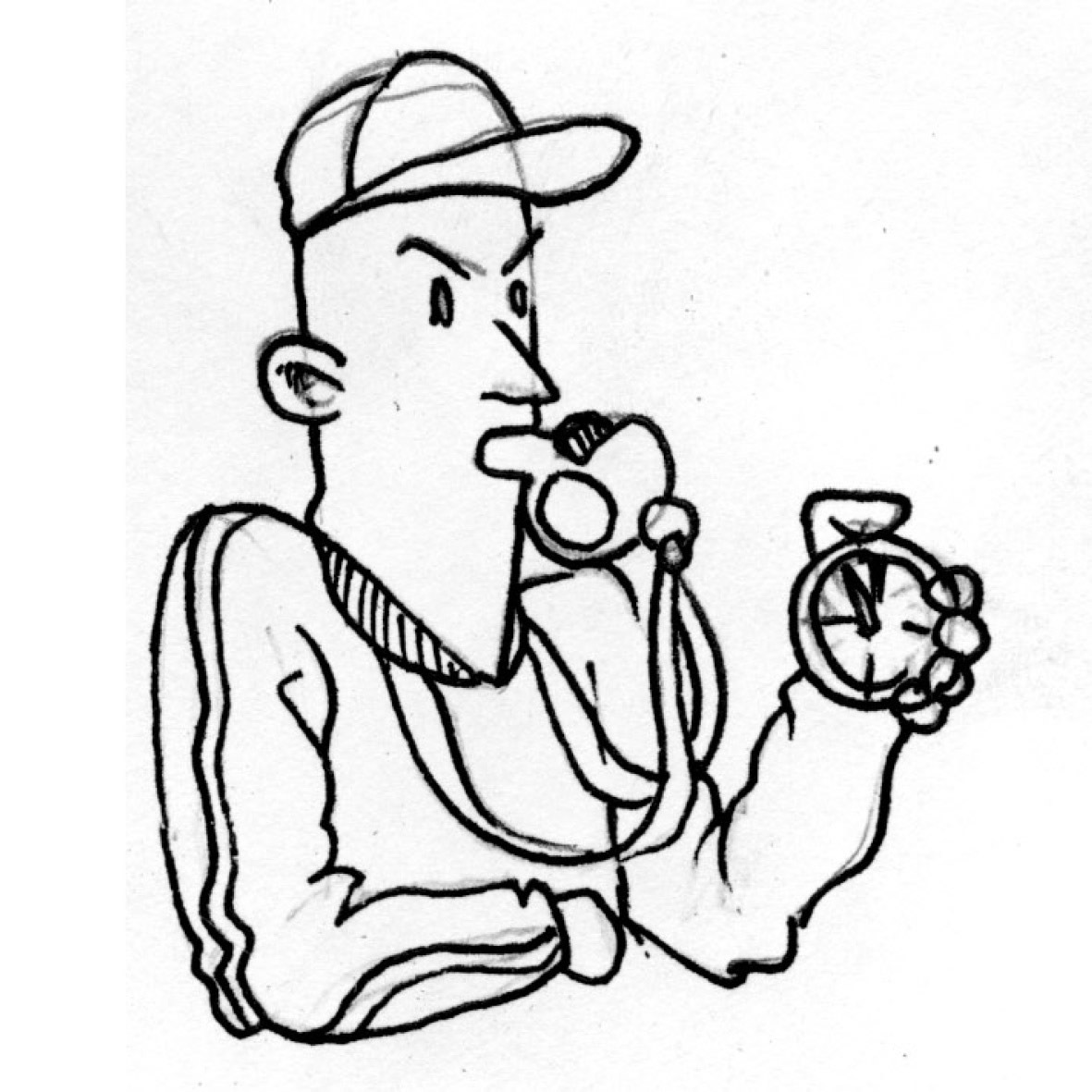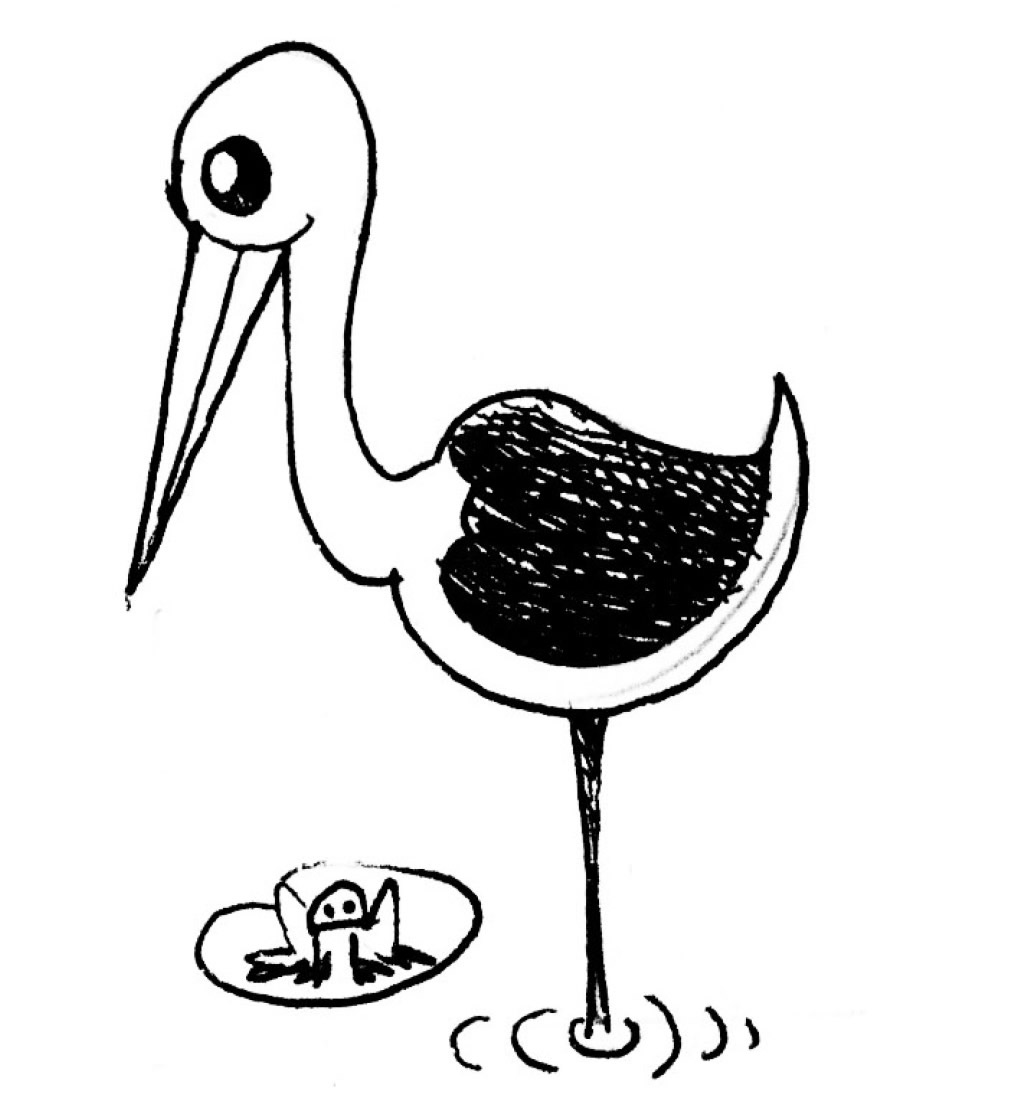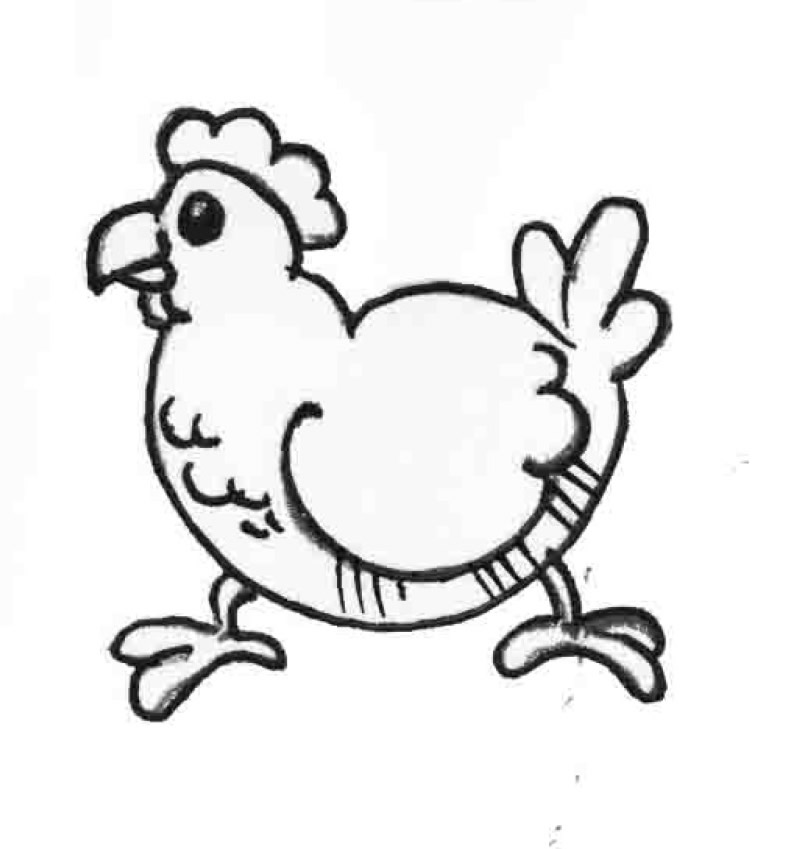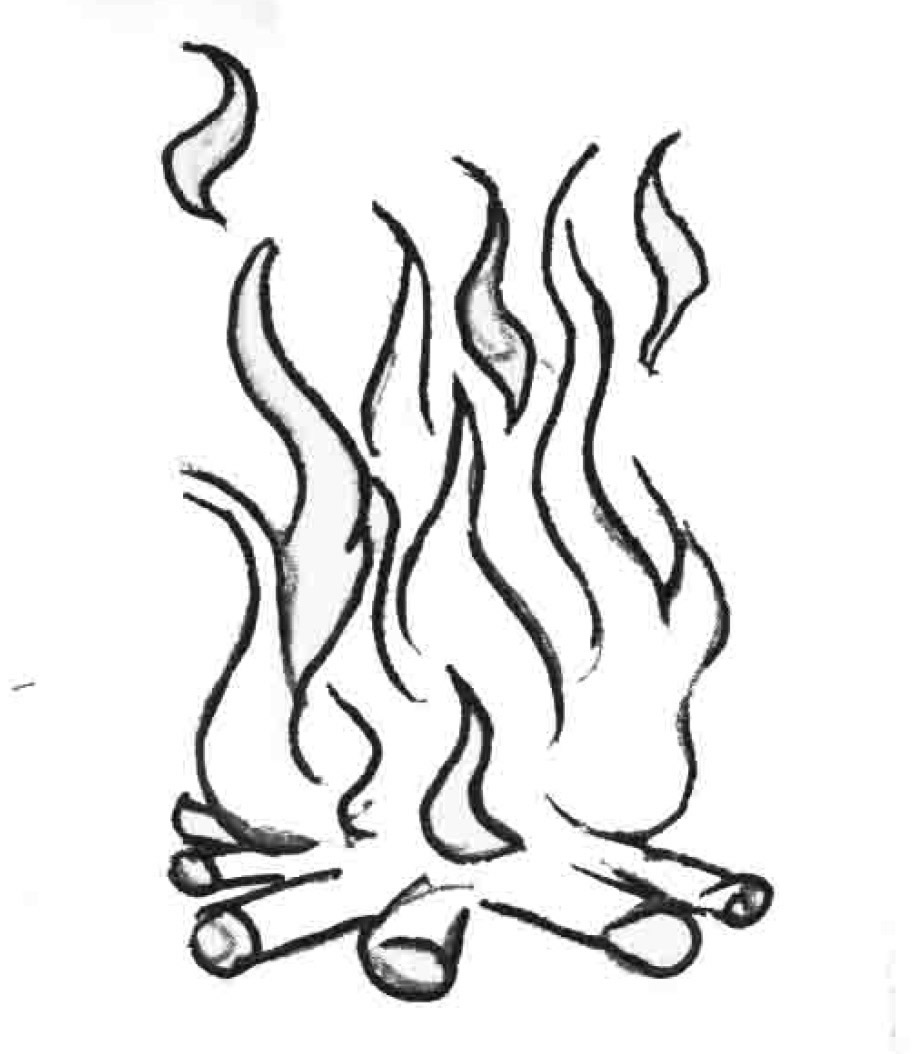2.1.
2. lecke Te magyar vagy?
Days of the week, numbers 1-10, countries and the alphabet
Pages 7-11 in the printed book
Some principles of Hungarian ortography and pronounciation:
a) Hungarian writing closely follows the pronunciation which means that it is easy to read and pronounce any Hungarian word once you know what the letters stand for. A learner of English as a foreign language might have problems pronouncing read, pear, weather or cut, cute and push because they don’t know what the ea and u letters stand for. In Hungarian this is not a problem because the letters always indicate the same sound.
b) There are diacritics over some characters: á, é, ó, ö, ő, ú, ü, ű. These diacritics are not accents. Accent is marked this way in some languages (for example Spanish) but in Hungarian they indicate different sounds.
The following word pairs show you some good examples:
agy (brain) – ágy (bed)
ver (to beat) – vér (blood)
teve (camel) – tévé (TV)
bor (wine) – bőr (skin)
c) As for the pronunciation, the two letters in the pairs a – á and e – é are pronounced differently but the letters of the following pairs are pronounced the same way (the place and the mode of articulation is the same) the only difference between them is the length (the second ones are long): i – í, o – ó, ö – ő, u – ú, ü – ű.
d) The accent or stress doesn’t have to be marked in Hungarian because it always falls on the first syllable.
e) There are some letter combinations (digraphs) which indicate one sound. Such examples are cs in csütörtök (Thursday), gy in egy (one), ly in gólya (stork), ny in nyolc (eight) sz in szerda (Wednesday) and ty in tyúk (hen).
csütörtök (Thursday)
egy (one)
gólya (stork)
nyolc (eight)
szerda (Wednesday)
tyúk (hen)
f) There are short and long vowels and also short and long consonants in Hungarian. Long vowels are easily recognizable because the diacritic shows the length: á, é, í, ó, ő, ú and ű are long vowels. When you see a consonant doubled (for example in kedd – Tuesday and kettő – two) it means that the consonant is long.
kedd (Tuesday)
kedden (on Tuesday)
kettő (two)
g) h is always pronounced, also in word initial position (hétfő – Monday, három – three, hat – six, hét – seven).
hétfő (Monday)
hónap (month)
három (three)
hat (six)
hét (seven)
h) There are some letters which are included in the Hungarian alphabet but are very rarely or never used. The letters q, x and w occure only in foreign loan words (taxi, WC), while dz and dzs are very rare. The letter y appears mainly in digraphs (ly, gy, ny, ty) and sometimes in names where it is pronounced as i (like in the name of the famous Hungarian poet Endre Ady).
i) The only example when a sound can be indicated by two different letters is ly and j. If you hear a word that contains the /j/ sound you don’t know which letter to use in writing. It has to be memorized (but j is more common and there are few words with ly).
j) What you should not worry about:
- hearing the difference between a – á – o and e – é – i because it’s difficult for everyone
- pronouncing r becauase many students find it difficult
- pronouncing some vowels (for example ö and ü). Don’t worry, it takes time and practice.
- life. You should not worry about life in general because it just happens. But to be honest, most of us do worry about life.
2.2.
The alphabet
Page 7 in the printed book
Listen and repeat the name of the months:
hónapok (months): január, február, március, április, május, június, július, augusztus, szeptember, október, november, december
Listen and repeat the days of the week:
napok (days): hétfő (Monday), kedd (Tuesday), szerda (Wednesday), csütörtök (Thursday), péntek (Friday), szombat (Saturday), vasárnap (Sunday)
Listen and repeat the numbers 1-10:
1 – egy, 2 – kettő, 3 – három, 4 – négy, 5 – öt,
6 – hat, 7 – hét, 8 – nyolc, 9 – kilenc, 10 – tíz
This is the Hungarian alphabet with examples:
| a | január, szerda | í | tíz | s | július, vasárnap |
| á | március, vasárnap | j | január | sz | szerda, augusztus |
| b | február, szombat | k | kedd, kilenc | t | öt, péntek |
| c | március, december | l | nyolc, július | ty | tyúk (hen) |
| cs | csütörtök | ly | gólya (stork) | u | május, augusztus |
| d | december, kedd | m | december, három | ú | június, július |
| dz | edző (coach) | n | négy, péntek | ü | csütörtök |
| dzs | dzsúsz (juice) | ny | nyolc | ű |
tűz |
| e | szeptember, szerda | o | nyolc, október | x | |
| é |
hétfő, péntek |
ó |
október |
y | |
| f | február, hétfő | ö | csütörtök, öt | v | vasárnap, november |
| g | augusztus | ő |
hétfő, kettő |
w | |
| gy | egy, magyar (Hungarian) | p | péntek, szeptember | z | tíz |
| h | hétfő, hat | q | zs | zsiráf | |
| i | április, kilenc | r | három, csütörtök |
 |
 |
| edző |
gólya
|
 |
 |
| tyúk |
tűz
|
2.3.
Countries and nationalities
Page 8 in the printed book
Many names of countries contain the word ország (country/land). Nationalities in Hungarian are not spelt with capital letters because they are adjectives.
Countries and nationalities:
| Németország – német (Germany – German) Finnország – finn (Finland – Finnish) Lengyelország – lengyel (Poland – Polish) Spanyolország – spanyol (Spain – Spanish) Görögország – görög (Greece – Greek) Franciaország– francia (France – French) Magyarország – magyar (Hungary – Hungarian) Olaszország – olasz (Italy – Italian) Oroszország – orosz (Russia – Russian) Csehország – cseh (Czechia – Czech) Észtország – észt (Estonia – Estonian) Törökország – török (Turkey – Turkish) Anglia – angol (England- English) Hollandia – holland (Holland – Dutch) Svájc – svájci (Switzerland – Swiss) Portugália – portugál (Portugal – Portugese) Románia– román (Romania – Romanian) Japán – japán (Japan – Japanese) USA – amerikai (USA – American) Szlovákia – szlovák (Slovakia – Slovakian) Ausztrália – ausztrál (Australia – Australian) Ausztria – osztrák (Austria – Austrian) |
2.4.
Where do you come from?
Additional material to page 8 in the printed book.
These words can be used to talk about one’s nationality or country of origin. The question that is used to ask about one’s country of origin may have a formal and an informal form:
| Honnan jött? (Where do you come from? – formal) Honnan jöttél? (Where do you come from? – informal) |
Note that the intonation rises in the question word and then it falls.
The answer contains the name of the country with an ending (-ból/-ből) that means from. Endings in Hungarian may have two or more versions. It will be discussed later how you use the different versions of the suffixes. The other word in the answer is jöttem (I came).
| Németországból jöttem. (I come from Germany.) Finnországból jöttem. (I come from Finalnd.) Lengyelországból jöttem. (I come from Poland.) Spanyolországból jöttem. (I come from Spain.) Görögországból jöttem. (I come from Greece.) Franciaországból jöttem. (I come from France.) Olaszországból jöttem. (I come from Italy.) Oroszországból jöttem. (I come from Russia.) Csehországból jöttem. (I come from Czechia.) Észtországból jöttem. (I come from Estonia.) Törökországból jöttem. (I come from Turkey.) Angliából jöttem. (I come from England.) Hollandiából jöttem. (I come from Holland.) Svájcból jöttem. (I come from Switzerland.) Portugáliából jöttem. (I come from Portugal.) Romániából jöttem. (I come from Romania.) Japánból jöttem. (I come from Japan.) Az USA-ból jöttem. (I come from the USA.) Szlovákiából jöttem. (I come from Slovakia.) Ausztráliából jöttem. (I come from Australia.) Ausztriából jöttem. (I come from Austria.) |
Note the pronunciation of the double tt in jöttem. All double consonants are pronounced long in Hungarian words. Some more examples:
| kedd (Tuesday) kettő (two) Finnország (Finland) Hollandia (Holland) Honnan jött? (Where do you come from? – formal) Honnan jöttél? (Where do you come from? – informal) |
2.5.
Personal pronouns (én – I, te – you, ő – he/she, Ön – formal you) the verb to be (vagyok – I am, vagy – you are, - – he/she is )
Page 9 in the printed book.
The chart shows the personal pronouns and the corresponding forms of the verb to be, which we can use to talk about our nationality. The personal pronouns are én (I), te (you, singular, informal), ő (he/she – There is no distinction between male/female forms in Hungarian.) In many sentences (én) (te) and (ő) are in brackets because personal pronouns do not appear in neutral sentences.
|
én |
lengyel |
vagyok |
|
|
te |
vagy |
||
|
ő |
ön |
- |
|
It is easy to form sentences using the personal pronouns and the verb to be:
| Lengyel vagyok.(I’m Polish.) Japán vagyok. (I’m Japanese.) Lengyel vagy. (You are Polish. – informal) Japán vagy. (You are Japanese. – informal) Ő lengyel. (He / She is Polish.) Ő japán. (He / She is Japanese.) Ön lengyel. (You are Polish. – formal) Ön japán. (You are Japanese. – formal) |
In the following minidialogue two people introduce themselves:
 |
|
|
– Szia! |
– Hi. |
As you may see, in the second person te is the informal form while Ön is formal. However, Ön is used with the third person form of the verb. The third person form of the verb to be is -, that is, no verb appears in the sentence.
| Te angol vagy. (You are English. – informal) Ön angol. (You are English. – formal) |
Formal and informal structures are both common in Hungarian. There are many cases when you are clearly expected to use formal language, for example official meetings or job interviews. Formal language is commonly used by adults who don’t know each other. This includes the use of third person grammatical forms and appropriate address forms when needed.
Informal language is normal when young people talk to each other and it is also used in the family or between friends. Informal language use is becoming increasingly widespread among adults too.
2.6.
Yes/No questions (Te magyar vagy? – Are you Hungarian?)
Page 9 in the printed book
We don’t really use sentences like ”You’re Hungarian.” in normal conversation. Questions in second person are much more useful though: „Are you Hungarian?” sounds natural and may occure in many situations. These yes/no questions have the same word order and the same structure in Hungarian as statements, the only thing that distinguishes them is the intonation. Statements have a descending intonation while yes/no questions have a funny singing (rising and falling) intonation. In these questions the intonation rises at the second last syllable and than quickly falls at the last syllable. The same rising and falling intonation may appear within the last syllable in case the sence is very short.
Te olasz vagy? (Are you Italian?)
Te finn vagy? (Are you Finnish?)
In the following dialogue A is trying to guess where B comes from. They are using informal structures:
|
A – Te amerikai vagy? |
– Are you American? |
This is the same dialogue but the speakers use formal language (that is, A is using formal structures and B is still just talking about himself/herself)
|
A – Ön amerikai? |
– Are you American? |
2.7.
Page 10/4.4. in the printed book
Two more dialogues with formal and informal versions.
1.
|
– Te spanyol vagy? |
– Are you Spanish? |
and the same dialogue in formal language:
|
– Ön spanyol? |
– Are you Spanish? |
2.
|
– Te francia vagy? |
– Are you French? |
and the same dialogue in formal language:
|
– Ön francia? |
– Are you French? |
2.8.
The definite articles (a / az)
11/6.1. in the printed book
Hungarian uses articles. The definite article has two variations (a and az). We use a if the word starts with a consonant and we use az if the word begins with a vowel. The meaning of the Hungarian definite article (a/az) corresponds to the English defintie article (the) but there are differences in its use.
| a / az | a szék |
| az asztal |
a szék (the chair), az asztal (the table), a virág (the flower), a tanár (the teacher), az üdítő (the soda), az iskola (the school), az egyetem (the university), az autó (the car), a könyv (the book), a ház (the house), az üzletember (the businessman), a bank (the bank), a táska (the bag), az ember (the person), a szendvics (the sandwich), a pincér (the waiter), az ásványvíz (the mineral water), a kávé (the coffee), az orvos (the doctor), a busz (the bus), az utca (the street), a város (the town), a megálló (the bus stop), a tér (the square)
2.9.
Mi ez?
11/6.2. in the printed book
Notes on the minidialogues:
- the minidialogues contain two question words: Mi? (What?) and Milyen? (What is it like? or What kind of …?)
- in the question Mi ez? (What is this?) ez means this and there is no verb in the sentence
 |
|
|
– Mi ez? |
– What is this? |
 |
|
|
– Mi ez? |
– What is this? |
 |
|
|
– Mi ez? |
– What is this? |
 |
|
|
– Mi ez? |
– What is this? |
 |
|
|
– Mi ez? |
– What is this? |
 |
|
|
– Mi ez? |
– What is this? |